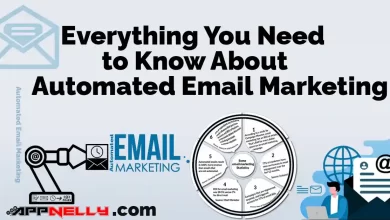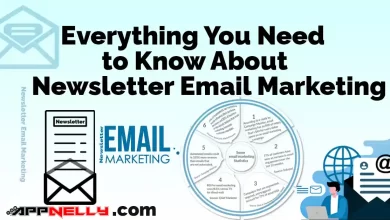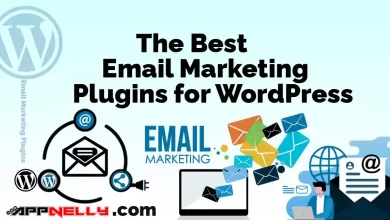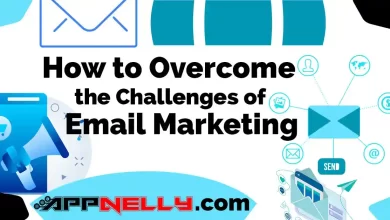Lead Nurturing Email Marketing: Level Up Your Sales Funnel Strategy

As a marketer, lead generation is a vital aspect of your job. But it’s not enough to simply collect email addresses; you need to nurture those leads to convert them into customers. Lead nurturing is the process of building relationships with your prospects through targeted, personalized communication. One of the most effective ways to do this is through email marketing. In this article, we’ll explore the key basic things you should know about Lead Nurturing Email Marketing.
Introduction
Email marketing is an important part of any successful sales funnel strategy. It’s the main way to nurture leads and turn them into paying customers.
But there’s more to email marketing than just sending out a few emails hoping they’ll convert. You need to take a more strategic approach, learning the ins and outs of how lead nurturing email marketing works, in order to maximize your success.
That’s where this guide comes in! In this post, we’ll discuss how you can use lead nurturing email marketing in order to level up your sales funnel strategy. We’ll go into detail on what lead nurturing is, why it’s important, and how you can make sure your lead nurturing emails are effective.
What Is Lead Nurturing Email Marketing?
Lead nurturing email marketing is a type of email marketing that is strategically designed to build relationship with potential customers over time. It is based on the idea that customers require different levels of communication and education before they will be ready to make a purchase.
The goal of lead nurturing emails is to provide value in each communication and foster long-term relationships between prospects and your business. By consistently providing valuable content, you can create trust and nurture leads until they are ready to make a purchase.
With lead nurturing emails, you can target prospects with a series of automated emails sent out on scheduled intervals, or triggered by certain actions taken by the lead. This helps ensure that your prospects receive consistent content throughout the customer journey—from initial awareness all the way through the purchase decision.
Understanding Your Sales Funnel
Before we dive into the specifics of lead nurturing email marketing, it is important to understand what a sales funnel is, and how leads move through it.
A sales funnel is a conceptual model that illustrates the customer journey, from discovery to purchase. It consists of several stages, usually beginning with awareness and ending with purchase.
To effectively nurture leads, it is essential to understand the sales funnel and its different stages. The sales funnel consists of four stages
- Awareness
At this stage, prospects are not yet aware of your brand or product. Your goal is to make them aware of your brand and what you have to offer.
- Interest
Once prospects are aware of your brand, your goal is to generate interest in your product or service. You need to provide them with relevant and valuable information to move them to the next stage.
- Decision
At this stage, prospects are considering purchasing your product or service. You need to provide them with the information they need to make a decision.
- Action
At this stage, prospects are ready to make a purchase. Your goal is to convert them into paying customers.
There are various strategies at each stage of the funnel. To identify which stage each lead is in, you need to consider the amount of engagement they demonstrate. For example, someone in the Awareness stage may have visited your website but not signed up for your newsletter or product demos.
Once you know where each lead is in their journey, you can start to move them down the funnel using specific tactics such as lead nurturing campaigns or loyalty programs.
Utilizing a combination of these strategies will help build relationships with potential customers and encourage them further down the sales funnel.
Building Your Lead Nurturing Email Strategy
Consider the following when building your Lead Nurturing Email Strategy:
- Establish Your Goals
Identify the characteristics of your ideal customer and establish the objectives you aim to accomplish from your email campaigns – this could include increasing customer loyalty, generating more brand awareness or driving more sales.
- Identify Your Content
Design email content that is tailored to each stage of your sales funnel – from purchase intent to post-sales follow up. Ensure that your content is relevant and engaging for each customer stage, so as to maximize engagement and drive conversions.
- Test Your Content
Test different content variations in order to identify what resonates best with the customer – this could include A/B testing subject lines, copy length or even call-to-actions (CTAs). You can also use data such as open rates, click rates and website visits to determine which content performs best.
- Analyze & Optimize
Analyze the performance of your lead nurturing emails using metrics such as open rate, click rate and conversion rate. Make necessary optimizations based on the data collected in order to maximize results.
Crafting Your Lead Nurturing Email Messaging
Crafting the right message in your lead nurturing email is essential if you want to convert leads into customers. The emails should be engaging and educational, providing helpful information about your brand and products. Here are a few tips to help craft the perfect lead nurturing emails:
- Choosing an Appropriate Platform
The first step is to choose an appropriate email marketing platform. There are a variety of options available, so take some time to research which one best meets your needs. Look for features such as email list segmentation, automation, lead scoring, and analytics capabilities.
- Creating Engaging Content
Once you have chosen a platform, it’s time to create content that resonates with your target audience. Be sure to keep the content focused on educating rather than selling; the goal should be to provide useful information that helps leads make an informed decision about your product or service.
- Segmentation & Personalization
Segmenting your audience into targeted groups will help make sure that you’re sending relevant content at the right time. Utilize personalization techniques such as using subscribers’ names in the subject line and including specific details about their interests or demographics in the body of the email.
- Timing & Frequency
Timing is key when it comes to lead nurturing emails; send emails at optimal times during the day when people are most likely to open them. Also consider how often you should be sending emails; too many can overwhelm subscribers and result in unsubscribes, while too few can leave potential customers feeling neglected or forgotten.
Automating Your Lead Nurturing Campaigns
Automating lead nurturing campaigns is essential for modern businesses. Not only does it save time and resources, but it also allows you to tailor your messages to each individual. Automation can help you stay competitive by giving you access to more leads than ever before.
With automated lead nurturing, you can:
- Reach out to more leads quickly and efficiently
- Personalize messages to each customer based on their behavior
- Monitor lead behavior in real-time
- Track outcomes and measure success
- Tailor messages to segmented audiences
- Optimize campaigns throughout the lifecycle
Popular automation tools like HubSpot, Mailchimp, and Constant Contact provide ready-made templates and shortcodes that make setting up automated campaigns easy and effective. They offer analytics tools that can track customer engagement and conversion rates, so you can make data-driven decisions about your content and marketing strategies in real-time.
Examples of Lead Nurturing Emails
Before we dive into the examples, let’s first recall what lead nurturing emails are. Simply say, these are emails designed to educate, inform, and engage leads over time. The goal is to build trust & credibility, and ultimately, persuade the lead to take action (i.e., make a purchase).
The following are five examples of Lead Nurturing Emails
- Welcome Emails
The first email you send to a new lead is critical. It sets the tone for your future communications and can determine whether the lead engages with your brand or not. A welcome email should be warm and friendly, thanking the lead for subscribing and introducing them to your brand. It should also provide a clear next step, such as visiting your website or downloading a free resource.
- Educational Emails
Educational emails are designed to provide value to the lead by educating them about your industry or product. These emails can include blog posts, videos, or other content that your lead would find interesting or useful. The key is to provide value without being overly promotional.
- Product-focused Emails
Product-focused emails are more direct than educational emails, as they focus specifically on your product or service. These emails can include product demos, case studies, or customer testimonials. The goal is to show the lead how your product can solve their problem or meet their needs.
- Re-engagement Emails
Not all leads will engage with your brand immediately, and some may lose interest over time. Re-engagement emails are designed to bring those leads back into the fold. These emails should be personalized and highlight the value your brand can provide. You can also include a special offer or discount to incentivize the lead to take action.
- Abandoned Cart Emails
Abandoned cart emails are a specific type of re-engagement email designed to win back customers who have abandoned their shopping cart. These emails should remind the lead of the products they left behind and provide an incentive to complete their purchase (such as free shipping or a discount).
Measuring and Optimizing Your Results
When it comes to measuring and optimizing your lead nurturing email campaigns, there are several key metrics that you should be tracking. Whether you are using a simple tracking system or a more advanced analytics platform, these metrics can provide valuable insights into the performance of your campaign.
Key Metrics to Track in Lead Nurturing Email Marketing
The most important metrics to track include:
- Open rate: This measures how many people opened your emails after receiving them. A high open rate indicates that your subject lines and content is resonating with your subscribers.
- Click-through rate (CTR): This measures how many readers clicked through links in your emails to visit the landing page or website associated with the campaign. A high CTR indicates that users were interested enough in the content of your email to click and explore further.
- Conversion rate: This measures how many people completed a desired action after clicking through from an email, such as making a purchase or downloading an app. A high conversion rate is indicative of successful campaigns.
- Bounce Rate: This is the percentage of emails that were undeliverable and returned to the sender. A high bounce rate can indicate issues with your email list or email content.
- Unsubscribe Rate: This is the percentage of people who unsubscribed from your email list after receiving your email. A high unsubscribe rate may indicate that your email content or frequency is not resonating with your audience.
Analyzing Your Data
Once you have collected data, it’s important to analyze it in order to gain meaningful insights about what’s working and what isn’t in relation to each of the key metrics mentioned above. You should compare results from different campaigns over time and try to identify trends in order to determine which strategies are most effective for achieving desired goals.
By measuring and analyzing lead nurturing email marketing results, marketers like you can effectively optimize their campaigns for maximum success—from improving response rates to boosting sales performance.
Conclusion
Effective lead nurturing emails are critical to converting leads into customers. lead nurturing email marketing is an essential part of a successful sales funnel strategy. By leveraging the powerful capabilities of marketing automation, you can create an effective, highly-targeted lead nurturing process that increases customer engagement and drives conversions. By leveraging the insights from lead scoring, you can also create tailored email sequences that are most likely to resonate with your target customers. Furthermore, by automating the lead nurturing process, you can free up your time and resources to focus on building relationships with customers and creating a positive customer experience. So, take the next step and start leveraging lead nurturing email marketing to level up your sales funnel strategy today.



